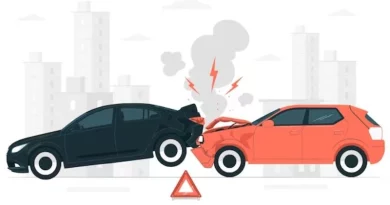Common Causes of Motorcycle Accidents: Identifying Negligence
Riding a motorcycle can be an exhilarating experience, but it can also become a life-altering experience in a blink of an eye. Unfortunately, motorcycle accidents are more likely to result in serious injury or death than car accidents due to the lack of protection a rider has compared to drivers in enclosed vehicles. While sometimes these accidents are caused by external factors beyond anyone’s control, other times they result from negligence on someone’s part. Nonetheless, all riders must be well-acquainted with the regulations surrounding a motorcycle crash to mitigate the situation when a tragedy occurs.
This post will explore some common causes of motorcycle accidents and how identifying negligence can help prevent them. Above all, if you or a loved one was injured, consult a law firm specializing in motorcycle accidents to guide you through the restitution process.
1. Distracted Driving
Distracted driving is one of the leading causes of all types of motor vehicle accidents, including those involving motorcycles. Using mobile phones while driving is the most common distraction seen. Drivers must focus only on the task when operating their vehicles, as any distraction could prove fatal.
In addition to phone use, while driving, other distractions include eating and drinking behind the wheel and adjusting the radio or navigation system. Drivers who engage in distracted driving put everyone around them at risk of severe accidents.
2. Speeding
Speeding is another common cause responsible for many motorcycle crashes. Vehicles that operate above posted speed limits reduce reaction time dramatically, making it difficult for quick evasive maneuvers on sudden road changes or obstacles en route.
Motorcycle riders are especially vulnerable since high-speed collisions without protective gear could lead to severe injuries or fatalities innumerable times higher than car occupants’ survivability chances in similar circumstances.
3. Impaired Driving
Impaired driving due to alcohol consumption is a notorious source of causing fatal and non-fatal vehicle accidents. This ranges from collisions with other vehicles such as trucks and cars, even cliffsides rocks. This is because liability will be judged based on the driver’s actions.
Besides alcohol impairment, other medications, sedatives, and narcotics which affect mental alertness also render the driver unable or unfit to drive and could lead to severe accidents. Riders should refrain from driving after consuming alcohol or taking medication, including over-the-counter drugs that may cause drowsiness.
4. Failure to Yield
Failure to yield is frequently cited as a causal factor in intersection collisions involving motorcycles where a car makes a left turn on an oncoming bike rider. Curves and blind spots where cars obstruct the view of motorcyclists are other potential areas for failure-to-yield collisions.
Negligence is attributed when drivers fail to prioritize the right-of-way rules, whether due to aggression, haste, or ignorance of traffic laws in their area of operation (guesstimating yellow lights duration). Failure to follow laws creates significant safety risks for riders and other motorists.
5. Lane Splitting
Lane-splitting occurs when a motorcycle rides between two lanes of vehicles traveling on either side towards opposite directions at unsynchronized speeds, leaving little margin for error during overtaking maneuvers.
Most states prohibit lane-splitting. But California is a notable exception mandating a maximum speed limit not exceeding 10 miles per hour while splitting lanes under specific conditions.
Lane splitting reduces reaction time and adds risk to intersections, especially if overtaking by cutting through solid lines dividing lanes reserved for vehicle occupants only. It puts bikes in conflict zones with intersecting motorists who aren’t expecting them.
6. Poor Road Conditions
Potholes, cracks, uneven surfaces, or debris on the road can compromise the traction that motorcycles rely on for stability and control. Motorcycles have only two wheels, making them more susceptible to losing control or skidding on surfaces with poor traction. This can lead to accidents, especially when riders need to brake or maneuver suddenly.
Uneven road surfaces, such as uneven pavement or poorly maintained roads, can pose a serious risk to motorcyclists. These irregularities can cause the motorcycle’s suspension unstable, leading to loss of control or unexpected jolts that may throw riders off balance.
7. Equipment Failure
Equipment failure can be a significant cause of motorcycle accidents. If the brakes or steering mechanism fail, the tires are worn-out and lose traction leading to skidding and tumbling.
Regular maintenance checks on motorcycles significantly reduce the risk of equipment malfunction resulting in crash occurrence.
Conclusion
In conclusion, many factors lead to motorcycle accidents causing loss of lives, physical injuries, or severe permanent disabilities to victims and other involved parties. As highlighted above by looking at some common causes of these types concerning risks mainly arising from negligence issues like distracted driving, speeding behaviors & impaired driving can lead to accidents such as failure to yield primary faults.




